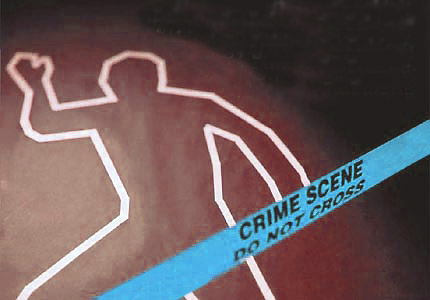The scene opens on a middle-aged man in a lab coat and glasses, surrounded by blackboards, whiteboards, and those whiteboards that think they’re so special because they’re transparent. He glances up, does a fake double-take, and smiles.
“Oh, hello there! I didn’t hear you come in. I guess you made your stealth check, eh?”
He pauses for non-existent laughter.
“I’m a game designer, and I’d like to talk you today about murder.”
He crosses over to a table littered with game components. It’s unclear if this is supposed to represent a single in-progress game, or a sampling of cards, player sheets, boards, and counters from a dozen different games. Either way, it’s clearly a mess.
“Oh, I don’t mean murdering your players–no matter how much you may want to–I mean murdering bits of your game that are just too much. I mean, look at this!”
He gestures to the cluttered table. The camera zooms in and pans over the various components.
“Games are complex systems. Over time, their complexity grows as you add more elements. When you play more cards, reveal more tiles, or unlock more amazing special abilities, you’re increasing the game’s complexity. That’s great, to a point.
“After a while, the game becomes so complex, it’s more work than fun to try and process it all. This can lead to lengthy downtimes between turns, which leads to boredom and frustration.”
Cut to a black and white video of several people gathered around a complicated board game. One player is poring over the cards in his hand, the cards in front of him, and the numerous boards scattered around the table. He’s sweating. The other players are yelling and shaking their fists. “It’s been twenty minutes, Carl! Take your turn already!”
Cut back to the game designer, who is now spinning a revolver around on his finger like a television cowboy.
“As a designer, you have several tools in your toolbox for reducing complexity. One of my favorite tools is actually a weapon.”
The camera zooms in on the table of game components. Gun shots ring out, and holes appear in several cards.
“Now I’m not saying you should remove these things from the game design itself. That’s called ‘killing your darlings’ and is something else entirely.
“No, I’m talking about removal mechanics. That is, including some way in the game for players to murder the components that are amping up the complexity a bit too high.
“In a traditional game, this could mean that players kill off each others’ units or in-game assets. In a more abstract game or…” (he whispers the word, “Eurogame”), “It could be the game itself culling extra pieces automatically, or under the passive-aggressive direction of the players.”
We pull back to see that the game designer is now wearing a cowboy hat and gunbelt to go with his revolver.
“As a player, you might be annoyed when your assets get destroyed. But just remember, like I told the judge…”
The camera zooms in on the designer and tilts at a dramatic angle.
“The game was getting too complex, your honor. Those pieces needed killing.”
Cut to the table of game components. The components are now on fire. The game designer leans into the frame and giggles.
“Oops,” he says.
Cut to the designer standing in a smoke-filled room. He waves.
“Thanks for joining us! Be sure to catch our next episode, when we discuss ways to address the classic king-maker problem using shanks made from household objects!”
Smoke obscures the game designer.
The screen goes black.

